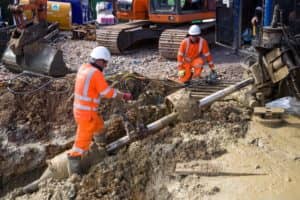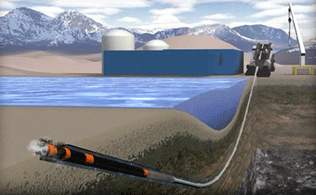Unveiling the Optimal Conduit Material for Underground Wire Installation: A Comprehensive Guide
In the realm of electrical installations, the underground wire installation stands out as a cornerstone for powering various outdoor systems, from lighting to irrigation. Yet, beneath the ground lies a complex network that demands protection and insulation against environmental factors and physical hazards. The conduit material chosen for this purpose plays a pivotal role in ensuring the longevity, safety, and efficiency of the electrical system. In this extensive discourse, we embark on a journey to explore the diverse conduit materials available, dissecting their merits, drawbacks, and the quintessential factors to consider for a seamless underground wire installation.
Understanding Underground Wire Installation
Before delving into the intricacies of conduit materials, it is imperative to grasp the essence of underground wire installation. This method involves the burial of electrical wires beneath the ground surface, thereby facilitating the provision of power to outdoor fixtures and systems. Such installations not only offer a visually pleasing solution but also mitigate the risk of damage or disruption posed by above-ground wiring. However, to shield these wires from the vagaries of nature and external forces, they must be encased within a conduit—a protective channel that safeguards the wires while facilitating their safe passage underground.
Factors to Consider:
The selection of an appropriate conduit material for underground wire installation hinges upon several crucial factors:
Durability:
The conduit material must exhibit resilience against the rigors of underground conditions, including moisture, soil acidity, and mechanical stresses. A durable conduit ensures the long-term integrity of the electrical system.
Expanding on Durability: Enduring underground environments necessitate conduit materials that can withstand constant exposure to moisture, soil chemicals, and physical pressures. Materials with high tensile strength and resistance to abrasion ensure that the conduit maintains its structural integrity over time, preventing leaks, cracks, or failures that could compromise the enclosed wiring.
Corrosion Resistance:
Given the prolonged exposure to moisture and soil, the chosen conduit material should possess inherent resistance to corrosion. This attribute is indispensable for safeguarding the structural integrity and functionality of the conduit over time.
Expanding on Corrosion Resistance: Underground environments often harbor corrosive elements that can degrade conduit materials over time, compromising their performance and longevity. Conduit materials with corrosion-resistant properties, such as PVC with additives or specially coated metal conduits, offer reliable protection against rust, oxidation, and chemical deterioration, ensuring sustained functionality and minimal maintenance requirements.
Conductivity:
Optimal electrical conductivity is paramount to maintain the efficiency and reliability of the electrical system. The conduit material should facilitate seamless electrical transmission while minimizing impedance or signal loss.
Expanding on Conductivity: In addition to providing physical protection, conduit materials must also facilitate efficient electrical conductivity to ensure the smooth transmission of electrical currents. Materials with low electrical resistance, such as copper or aluminum alloys, promote minimal power loss and voltage drop, optimizing the performance of the electrical system while reducing energy consumption and operational costs.
Cost-effectiveness:
Balancing quality with cost considerations is pivotal in selecting the conduit material. While prioritizing durability and performance, it is imperative to opt for a material that aligns with the project budget without compromising on essential attributes.
Expanding on Cost-effectiveness: While upfront costs are a significant consideration, the total cost of ownership encompasses factors such as maintenance, repair, and replacement expenses over the conduit's lifespan. Choosing a conduit material that strikes a balance between initial investment and long-term savings can yield substantial cost-effectiveness. Additionally, factors such as ease of installation and compatibility with existing infrastructure can influence overall project costs and efficiency.
Installation Ease:
The ease of installation can significantly impact project timelines and labor costs. A conduit material that offers ease of handling and installation expedites the construction process while minimizing labor expenditures.
Expanding on Installation Ease: Conduit materials that are lightweight, flexible, and readily adaptable to varying terrain simplify the installation process, reducing labor requirements and project timelines. Additionally, materials with pre-fabricated components or innovative installation techniques, such as push-fit connectors or trenchless methods, streamline the assembly process, minimizing disruptions and optimizing workflow efficiency.
Exploring Conduit Materials:
1. PVC (Polyvinyl Chloride):
PVC conduits have emerged as a popular choice for underground wire installation, owing to their commendable attributes and cost-effectiveness. Advantages:
PVC conduits exhibit remarkable durability and corrosion resistance, making them well-suited for underground applications.
They boast excellent electrical insulation properties, mitigating the risk of electrical hazards and ensuring optimal safety.
PVC conduits are lightweight and easy to handle, facilitating swift and hassle-free installation processes. Disadvantages:
Prolonged exposure to sunlight may cause PVC conduits to degrade over time, necessitating UV-resistant additives or protective measures.
They have limited temperature tolerance, which may pose challenges in regions characterized by extreme climatic conditions.
2. HDPE (High-Density Polyethylene):
HDPE conduits represent a premium choice for underground wire installation, offering unparalleled durability and versatility. Advantages:
HDPE conduits boast exceptional resistance to corrosion, abrasion, and chemical degradation, ensuring longevity in harsh underground environments.
They exhibit remarkable flexibility, allowing for easy installation around obstacles and uneven terrain without compromising structural integrity.
HDPE conduits feature a high temperature tolerance, making them well-suited for regions characterized by extreme weather conditions. Disadvantages:
HDPE conduits may entail higher upfront costs compared to other materials, potentially impacting project budgets.
Specialized equipment and techniques may be required for the installation of HDPE conduits, adding complexity to the construction process.
3. Metal Conduits (Steel or Aluminum):
Metal conduits, including steel and aluminum variants, offer unmatched strength and durability for underground wire installation. Advantages:
Metal conduits provide robust protection against external forces, including mechanical impact and environmental hazards, ensuring the integrity of the electrical system.
They exhibit excellent thermal conductivity, dissipating heat effectively and minimizing the risk of overheating.
Metal conduits are inherently resistant to UV radiation, making them suitable for exposed outdoor installations. Disadvantages:
Metal conduits are susceptible to corrosion, particularly in acidic soils or corrosive environments, necessitating periodic maintenance and corrosion prevention measures.
They are heavier and more cumbersome to handle compared to plastic conduits, potentially increasing labor costs and installation complexities.
Conclusion
In the realm of underground wire installation, the choice of conduit material holds profound implications for the performance, longevity, and safety of the electrical system. By meticulously considering factors such as durability, corrosion resistance, conductivity, cost-effectiveness, and installation ease, stakeholders can make informed decisions that align with project requirements and budget constraints. Whether opting for PVC, HDPE, or metal conduits, prioritizing quality and reliability ensures a seamless and efficient underground wire installation, laying the foundation for enduring electrical infrastructure and functionality.




.jpg)

Comments
Post a Comment